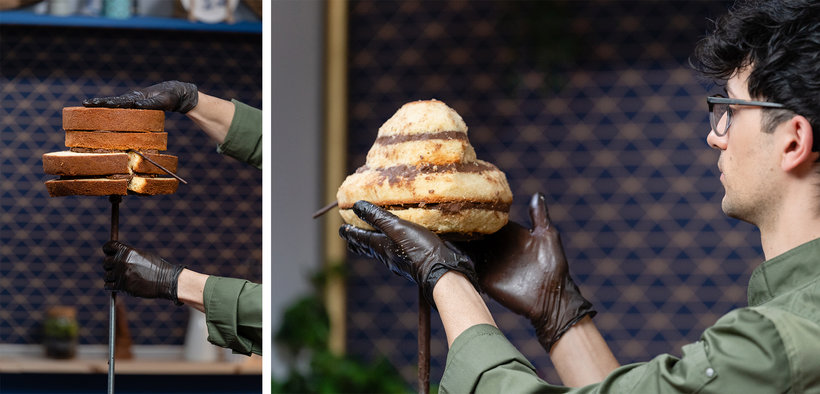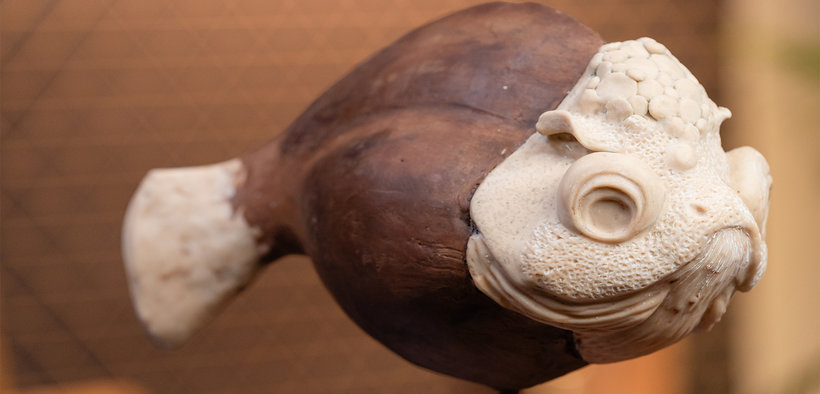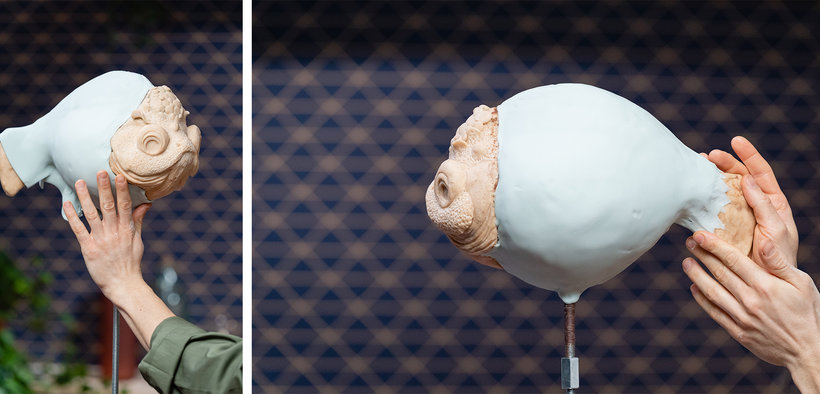Edible Sculptures Design
Course final project
A course by Marc Suárez , Cake Designer
About the final project for: Edible Sculptures Design
Edible Sculptures Design
“As you may have seen, the process of creating a carved cake is somewhat slow and requires patience, but if you can understand the cake step by step as a linear process, which goes from the general to the particular, from the large to the small , you can create authentic works of art, with the particularity of being edible. I hope that with this course I have been able to awaken in you what I myself experienced when I discovered creative pastry and that is still alive, what motivates me every day to create true edible sculptures. During the course I have explained many cake decorating techniques to you and I have used very different materials that you may know, so, before finishing this course, I want to review the phases that I have followed to make the fish-shaped cake. I hope it inspires you to create your own project and share it with the Domestika community. Come up with an idea that is feasible and seek inspiration It is often difficult to find ideas that are both good and feasible to make on cake. Remember that to be able to transform an object into a cake it must be solid, it must have enough volume to be able to put cake and a focal point as close as possible to the base. Next, you should start looking for inspiration to have reference images to support your creation. Remember that it is not necessary to look strictly in the creative confectionery sector. Perhaps an interior design image can give you a color palette that you like, or an image of a piece of fabric can give you information about a certain texture. After all, you can find inspiration in what you least imagine. Don't forget to look for at least one profile image of what you want to carve. Make the sketch of your cake and draw its structure Before starting to draw the sketch, remember that it is important to print the profile photo of what you need to carve at the final size. In this way you can draw the structure taking into account the final dimensions of your cake. Next, it is important that you analyze the shape to be carved and determine with what materials you will make each of the parts of your cake. Finally, you will have to draw the structure to hold the cakes. Remember that it is important to maintain a central axis, trying to distribute the weight equally to the side and side of the axis, and that it is important not to place elements too far from that same axis. All the measurements of threaded rods and other pieces can be obtained directly by measuring in the sketch. Remember that to obtain the shape of the wooden base that holds the cakes, you should look for more images with other points of view on the same object, so you can better understand the generic shape that you should give to the wooden base.










Partial transcription of the video
“Final Project In this video, we're doing a summary of our final project. As you know, I chose a fish for this final project, but if you think this shape is too complicated, you can choose an easier shape. For example, a similar but easier shape would be the shape of a lemon or a rugby ball. And using this final project, you'll be able to make other shapes. Any type of animal or figure that's fixed and rounded. It's a simple structure to which it's very easy to add a few more pieces to take the cake we made in this course one step further. Remember the main thing at the beginning is getting ...”
This transcript is automatically generated, so it may contain mistakes.
Course summary for: Edible Sculptures Design
-
Category
Craft, Culinary -
Areas
Baking, Cake Decorating, Cake Design, DIY, Edible Art, Fondant

Marc Suárez
A course by Marc Suárez
Marc Suárez is a cake designer and expert in hyperrealistic sculptures using modeling chocolate. He's taught creative baking and cake decoration classes all across the world, from New Zealand to Canada, stopping by in Australia, Singapore, India, Kuwait, Greece, the United States, and Costa Rica.
He received the Sculpted Cake Award at the 2019 Cake Master Awards, also known as the Cake Oscars due to its international prestige. Throughout his career he's also been awarded first prize at the 2015 BCN&Cake (Spain), first prize at the 2016 Marseille ExpoGato (France), gold medal at both the 2016 and 2019 Cake International (UK), and second prize at the 2018 SoFlo Cake&Candy Expo (USA).
- 99% positive reviews (143)
- 6,231 students
- 22 lessons (4h 38m)
- 29 additional resources (8 files)
- Online and at your own pace
- Available on the app
- Audio: Spanish, French, Italian, Portuguese, Turkish
- Spanish · English · Portuguese · German · French · Italian · Polish · Dutch · Turkish
- Level: Beginner
- Unlimited access forever
Areas


